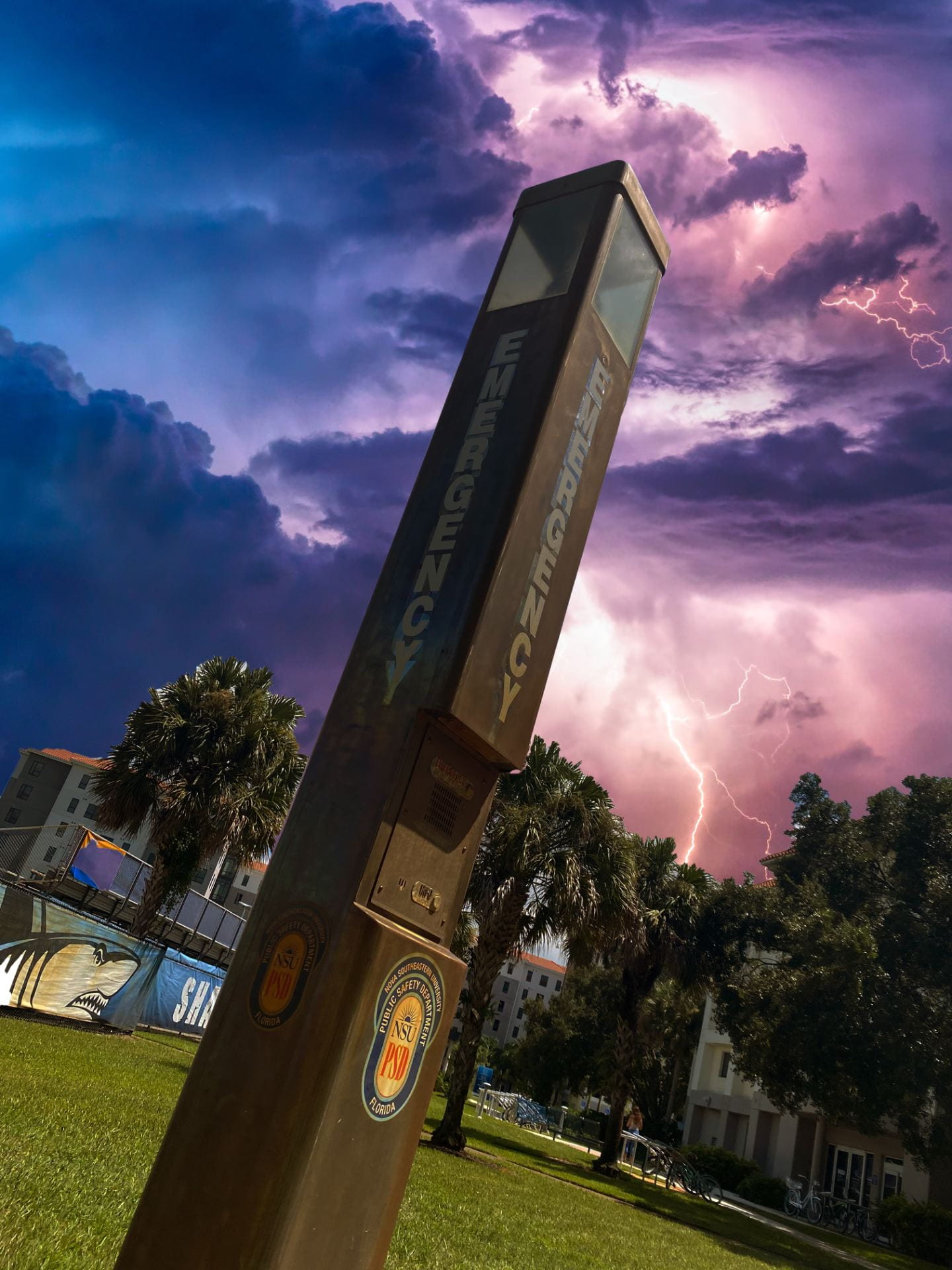On Tuesday, Oct. 20 at 2 p.m., NSU Public Safety tested the NSU Alert Emergency Notification System (ENS) throughout all university campuses. This test is conducted at least once a year to ensure that all ENS equipment is functioning properly and to improve the alert system. The test was a collaboration between Public Safety, the Office of Innovation and Information Technology (OIIT) and University Relations to activate additional messaging to the street corner signs and banner messages on NSU websites.
“For this test, we had 45 Public Safety personnel that were deployed throughout campus as observers, stationed at different locations, to let us know how well the message was received from that location. We had Public Safety broadcasters test their vehicle public address systems. We also used administration at all the regional campuses and other campus collaborators for feedback on the success of the test. It was a group effort, and collectively, well over 50 people provided feedback to this test which was reported as highly satisfactory,” said James Lambe, associate director of communications and technology.
This test was particularly challenging for Public Safety due to the logistics of performing this emergency alert test with COVID-19 procedures in place and weather and noise pollution. This required a debriefing to be presented in an auditorium prior to the test, and said protocols were used while checking out locations on campus.
“We have to test in real-world conditions. We can’t stop the planes flying over campus or stop the grounds crew from working. We would prefer that all operations continue as normal so that we could test the system with the normally expected noise pollution in the area. The testing is meant to see if you can still hear the system despite these interferences. There were some outdoor systems that were identified as not performing at 100% and all the others were performing as expected,” said Kevin Ligouri, acting emergency manager of campus.
Through this test, Public Safety has been able to identify areas of improvement in terms of optimizing outdoor speakers with sound issues and future goals for the system such as more testing throughout the year and potential updates to the intercom.
“In 2021, we would like to start testing three times per year on a quarterly basis. At a minimum, we do it once or twice a year, but we would like to make this commitment. There are potential changes to the network, damages in storms and updates to the system, so we find it is best to test often. We actually test the system on a weekly basis. If you are outside on Mondays at noon, you will hear the Westminster chimes on the outside speakers. The university is also reviewing the possibility of replacing one legacy system with a system that is being utilized at the NSU University School to bring over to the main campus. It’s a particular intercom system that can be used in the classrooms and to activate the outdoor speakers in the way of a relay device. Essentially, it would be upgrading our current intercom system, which is being discussed,” said Lambe.
According to Lambe, inside buildings, there are fire coms systems with voice evacuation communication. Along with a siren, it has voice ability in the speaker. They are changing some of the law that prioritizes emergency notifications to broadcast and leverage messages through that system.
“The purpose of this test is to keep the NSU community safe. I would urge anyone in the NSU community to update and check their communication information. The reason that we take such extensive measures with text, calling, emailing and outdoor speakers is just in the event of an emergency. We are trying to use a combination of centralized and decentralized modes of communication to disseminate this message,” said Ligouri.
Students are encouraged to update their emergency notification contact information online and download the SaferWatch App to receive the most up-to-date information and alerts, as well as report suspicious activities or safety issues to Public Safety.


